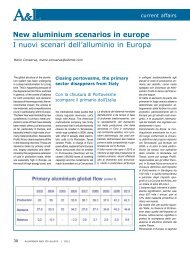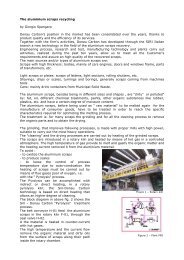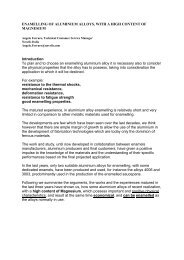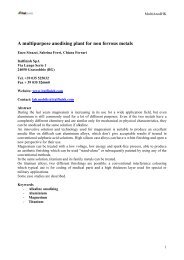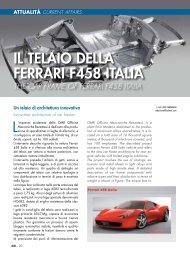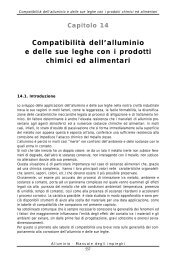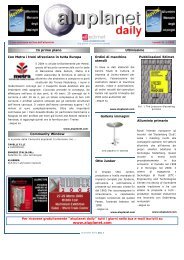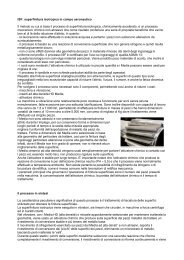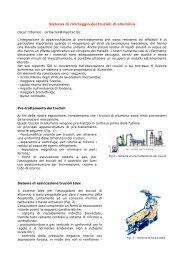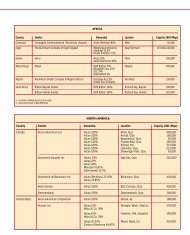ECOLOGICAL PREPAINT TREATMENT OF ALUMINIUM ... - Aluplanet
ECOLOGICAL PREPAINT TREATMENT OF ALUMINIUM ... - Aluplanet
ECOLOGICAL PREPAINT TREATMENT OF ALUMINIUM ... - Aluplanet
You also want an ePaper? Increase the reach of your titles
YUMPU automatically turns print PDFs into web optimized ePapers that Google loves.
Alkaline Clean<br />
Aqueous alkaline cleaning is the most important stage in surface preparation. Working at<br />
elevated temperature and solution pH, the traditional powdered chemical cleaners are<br />
designed to provide rapid and uniform surface wetting of the aluminium surface. They will<br />
break up and disperse surface soils from the substrate.<br />
Since aluminium is readily attacked by high pH, specialist formulations are used that operate<br />
at comparatively low alkalinity and pH, whilst being inhibited to ensure they are non-etching.<br />
Under normal operation, the working solution will become increasingly contaminated over<br />
time and process efficiency is reduced, as indicated on slide 3. Whilst additions of the<br />
formulation chemistry can be made to achieve short term performance improvements, a<br />
saturation point will be reached and the process solution has to be disposed of and replaced.<br />
The regular replacement of cleaning solutions increases overall process costs and in addition<br />
to the cleaner concentrate, there will be further costs and liabilities associated with waste<br />
disposal.<br />
Alkaline Clean<br />
Performance against Time<br />
Slide 3: solution performance against time<br />
Phosphating<br />
Phosphates originally developed for steel have been adapted for aluminium. Formulations<br />
contain a metal acid phosphate solution, an oxidizing agent and a complex fluoride which<br />
accelerates the deposition process. Coatings are formed as a result of the reaction of<br />
aluminium in phosphoric acid with fluoride as the principal reaction driver. The main<br />
requirement of the metal in solution (iron or zinc) is to form an insoluble phosphate during<br />
reaction. Saturation of the solution at the interface leads to the deposition of the phosphate<br />
coating.<br />
Amorphous iron phosphate and crystalline zinc phosphate treatments have been frequently<br />
used prior to painting. The primary component of zinc phosphate deposits on aluminium is<br />
hopeite Zn 2 Fe(PO 4 ) 2 .4H 2 O. Iron phosphate coatings typically consist of vivanite<br />
Fe 3 (PO 4 ) 2 .8H 2 O and magnetite Fe 3 O 4 .<br />
Phosphate processes are highly acidic and operate at elevated temperature. The mechanism<br />
involved is complex, but during the precipitation reaction, insoluble phosphate compounds are<br />
formed as by-products. These take the form of sludge and scale, which deposit and build onto<br />
application equipment reducing process efficiency, examples of these can be seen in slide 4.<br />
These typically cause the clogging of spray nozzles, the blocking of pipes and pumps, plus<br />
the scaling of the washer. Sludge formation consumes approximately 20 to 40% of process<br />
chemistry, therefore regular additions are critical to maintain efficiency and performance.



